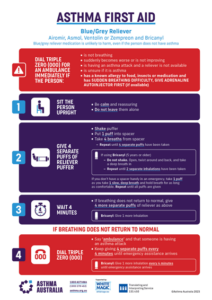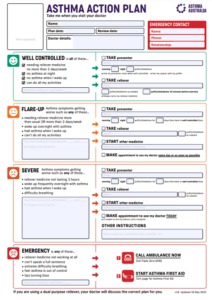Animals and pet dander
If animals are a trigger for you, it’s normal to assume this comes from an allergy to the animal’s hair. However, the allergy is usually to the proteins shed from:
- skin flakes (animal dander)
- saliva
- urine
- other fine particles (such as feather dust from birds).
Lots of pets can trigger allergic asthma symptoms. This includes cats, dogs, horses, rabbits, guinea pigs, mice and birds. This doesn’t mean you have allergies to all animals. It may just be one.
If you are allergic to animals or pet dander, your symptoms might include itchy or watery eyes and/or nose. You may also experience sneezing and coughing. A severe reaction could result in breathing difficulties, increased heart rate, feeling clammy, feeling faint, collapsing or anaphylaxis. In this case, seek urgent medical assistance.
Interestingly, a Swedish study of pet-ownership has found the more cats and dogs in the household during the first year of life, the less likely a child is to develop chronic conditions such as asthma, eczema and hay fever in the first place.
Talk to your doctor if you are concerned that a pet or animal is a trigger or causing allergy symptoms for you. They can arrange skin tests or special allergy tests that will help you to find your best treatment options.
Asthma Educators can answer your asthma questions
Book a FREE phone call at a time that works for you or call us direct on 1800ASTHMA (1800 278 462).





 1800 278 462
1800 278 462


